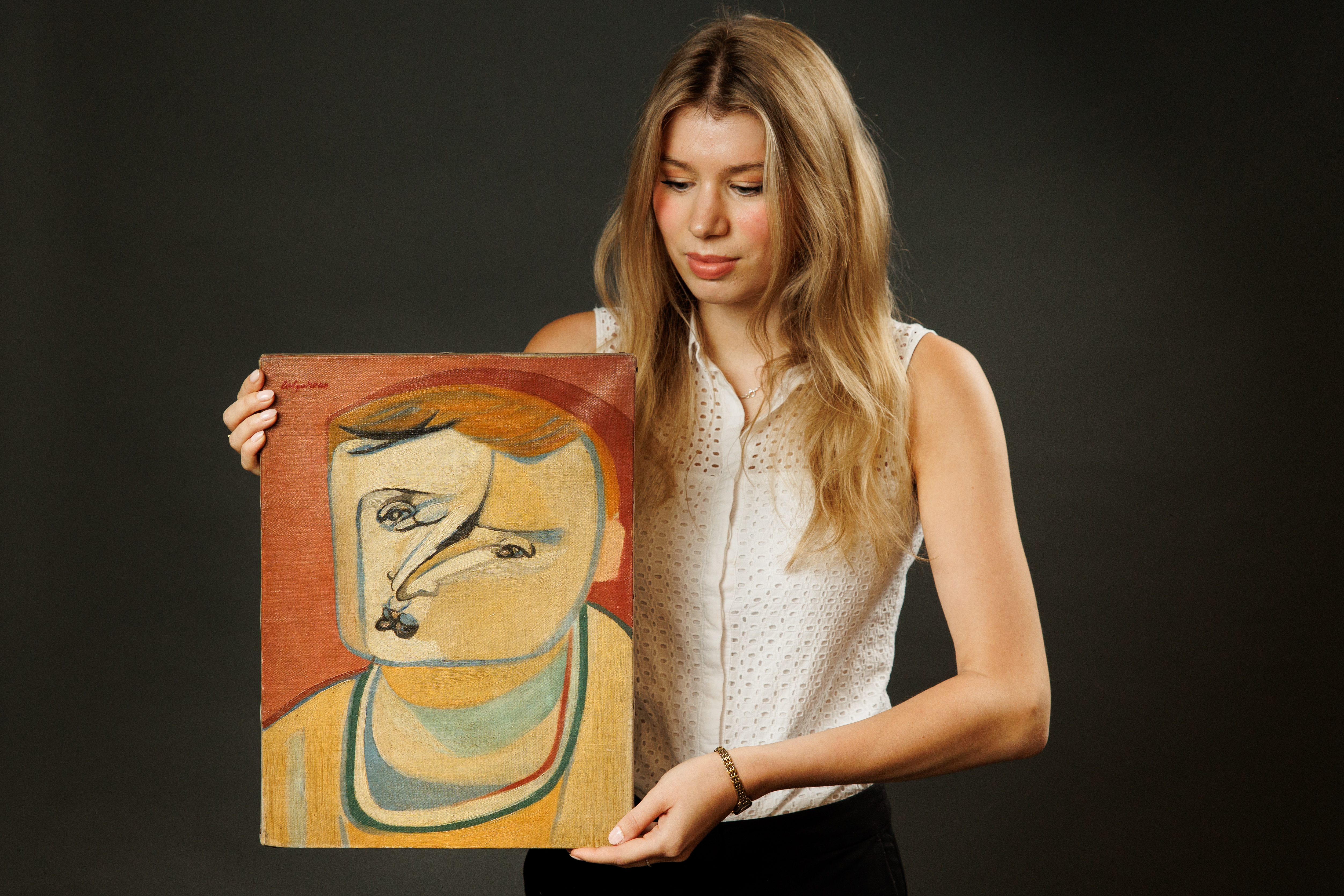Lot 139: Robert Colquhoun, British 1914-1962 - Head of Boy, c.1950
A highlight from the Modern British & 20th Century Art sale on the 12th September will be Robert Colquhoun’s ‘Head of Boy, c.1950’, a masterpiece of British Post-War painting. Colquhoun was a central figure in the artistic world of war-time London, alongside his life-partner Robert MacBryde (1913-1966), and their friends John Craxton and John Minton. Colquhoun and MacBryde (or 'The Two Roberts' as they were called) shot to fame under the patronage of Peter Watson, with important exhibitions of their work held at The Lefevre Gallery, The Whitechapel Gallery and numerous international mixed exhibitions. Most recently their work was the subject of a major retrospective at The National Galleries of Scotland in 2014-15.
We sat down with artist Davy Brown (b.1950 -), to discuss Colquhoun’s life and legacy. Davy’s paintings can be seen in public collections nationwide, including at the Gracefield Arts Centre, The University of York and The Royal Cumberland Hospital, Carlisle. Brown has written essays on The Two Roberts for The Scottish Gallery and the catalogue for the recent exhibition at The National Galleries of Scotland.
How did you first encounter the work of Robert Colquhoun?
I first heard of Robert Colquhoun the week he died, in September 1962. Like Colquhoun, several decades before me, I had just graduated at the age of twelve from Loanhead Primary School in Kilmarnock to Kilmarnock Academy. Word had just reached the Principal Teacher of art, John McKissock, of Colquhoun's untimely death in London. McKissock had known The Two Roberts at Glasgow School of Art, and was clearly distressed to hear the news. Unknown to me at the time, I was sitting in the same art room in which Colquhoun had been taught by James Lyle in the 1930s. It was McKissock who introduced me to the work of Colquhoun, which became a lifelong passion for me.
I bought my first Colquhoun work from proceeds from an exhibition of my work in 1977. It was the highly accomplished monoprint, ‘Two Irish Women’, which Colquhoun later used as the study for ‘Women in Ireland, 1958’, now in the collection of The Dick Institute in our home town of Kilmarnock. I purchased it from The Fine Art society, for what was the equivalent of two months' teachers' salary.
What makes it so powerful?
Colquhoun's work captured the spirit of the war and immediate post-war years. His finest work depicted the war-wounded, the maimed, the lonely and the war-widowed, with a power and a compassion unequalled by any of his contemporaries. He was, by far, the finest draughtsman of the so-called ‘Neo-Romantics’ active during the war years and immediately after.
Do you have a favourite painting by the artist?
Adding to the sense of melancholy in these paintings, is Colquhoun's use of astringent yellows, acid greens, oranges and rusts, applied with beautifully textured brushwork. The universal nature of his work resonates today in a world of increasing pain and suffering. This is epitomised in ‘Woman with a Birdcage, c.1946', in Bradford City Art Gallery, my favourite painting. The monoprint of the two Irish peasants, one of Colquhoun's reactions to the poverty he and MacBryde encountered in Cork, Crosshaven and Dublin in late 1946, remains my favourite monoprint.
Are there any future projects you are working on relating to Colquhoun?
I am currently writing a book on Colquhoun's monoprints, principally because it is that part of his output which has been ignored, forgotten or misunderstood by the art world. I would argue that Colquhoun's best monoprints are at least equal to his great paintings of 1945-47.





